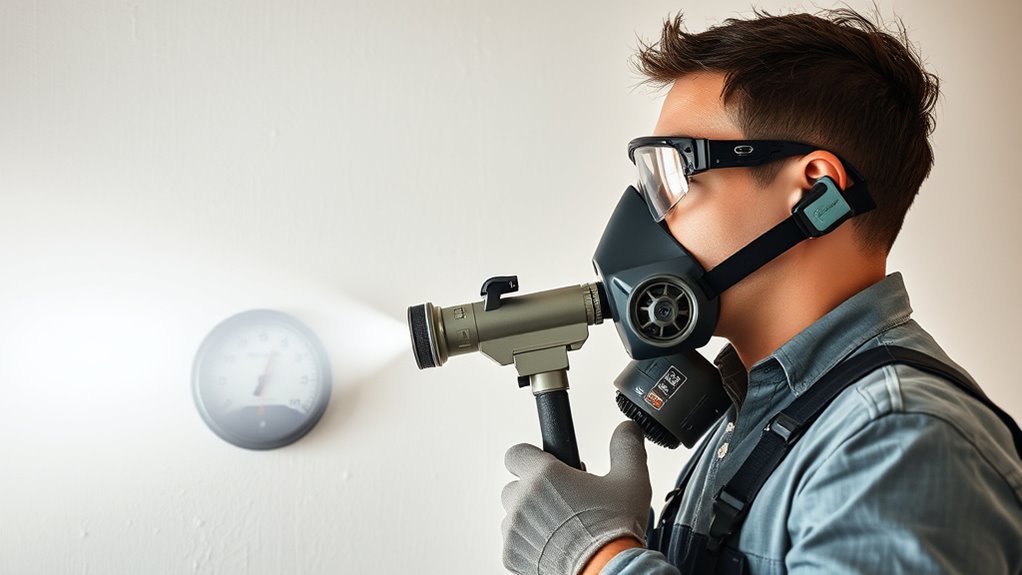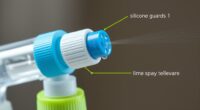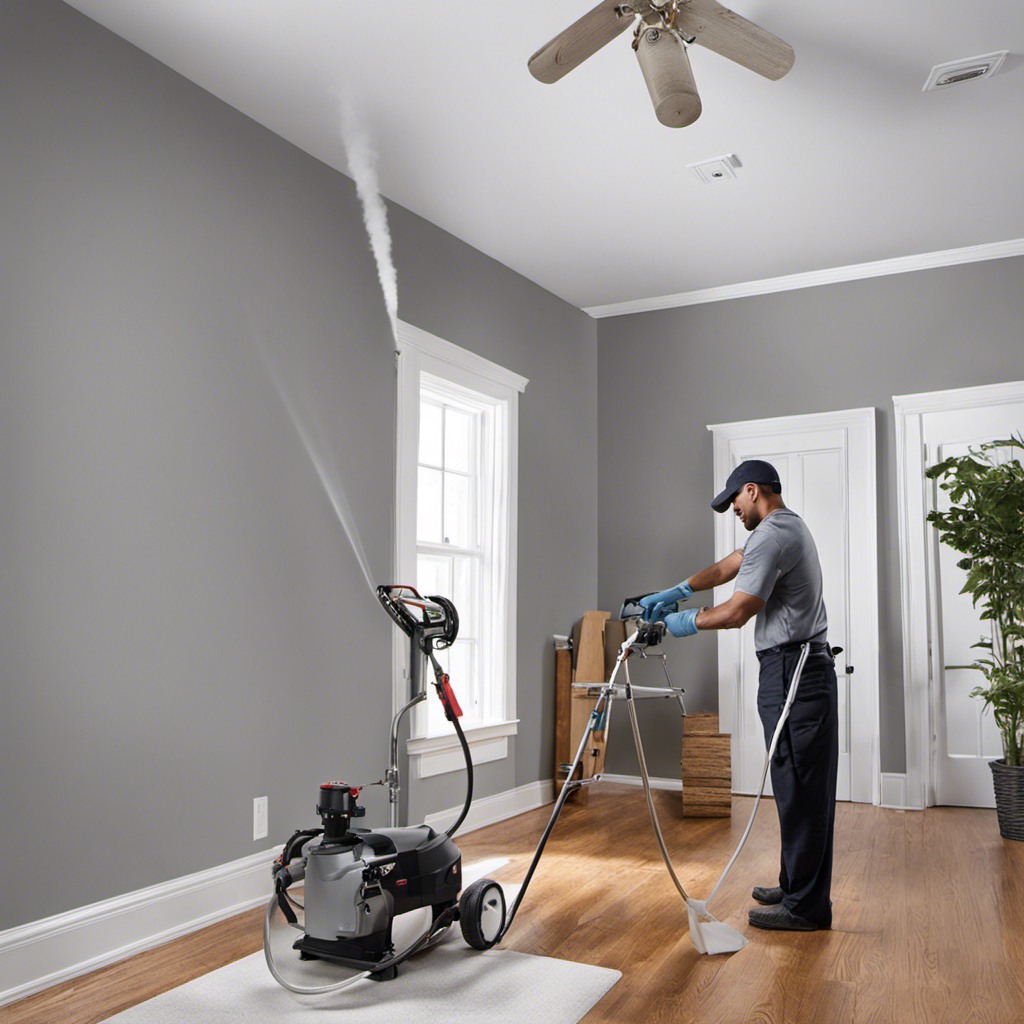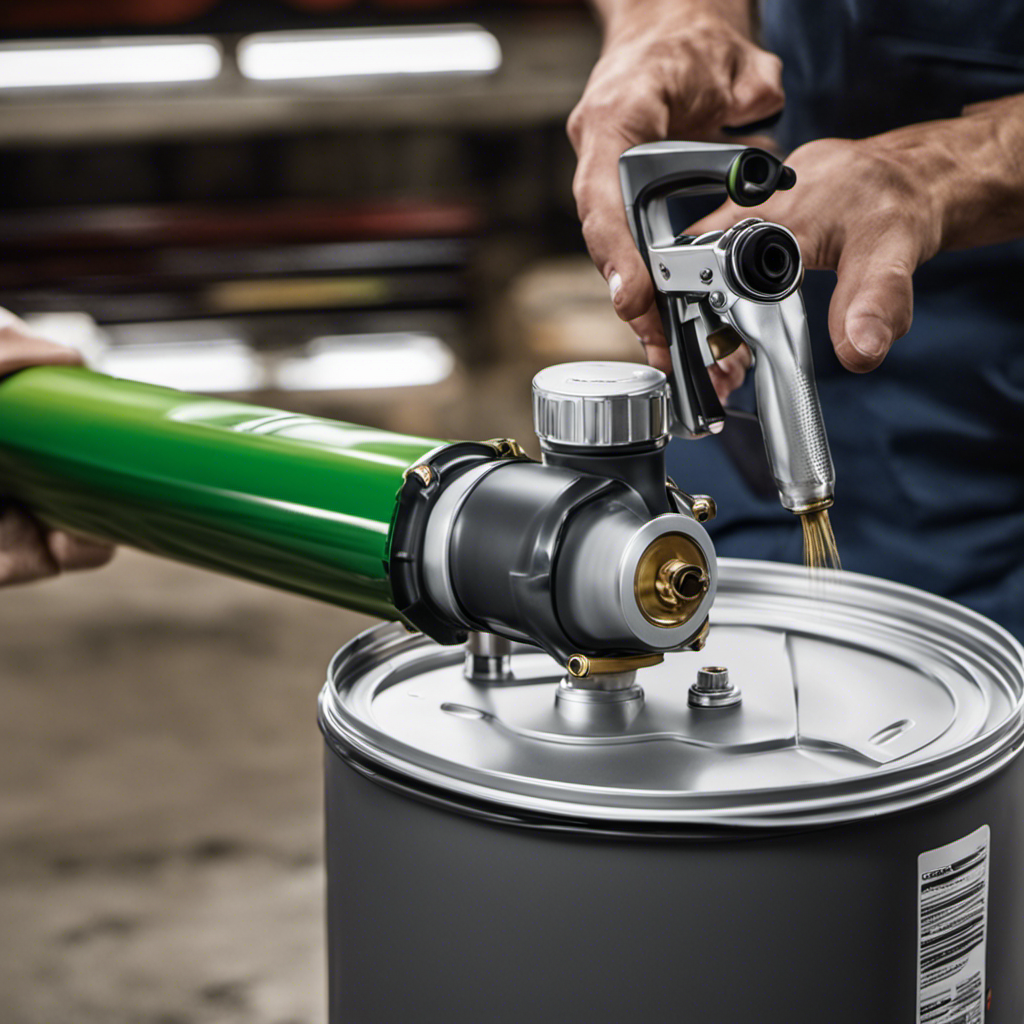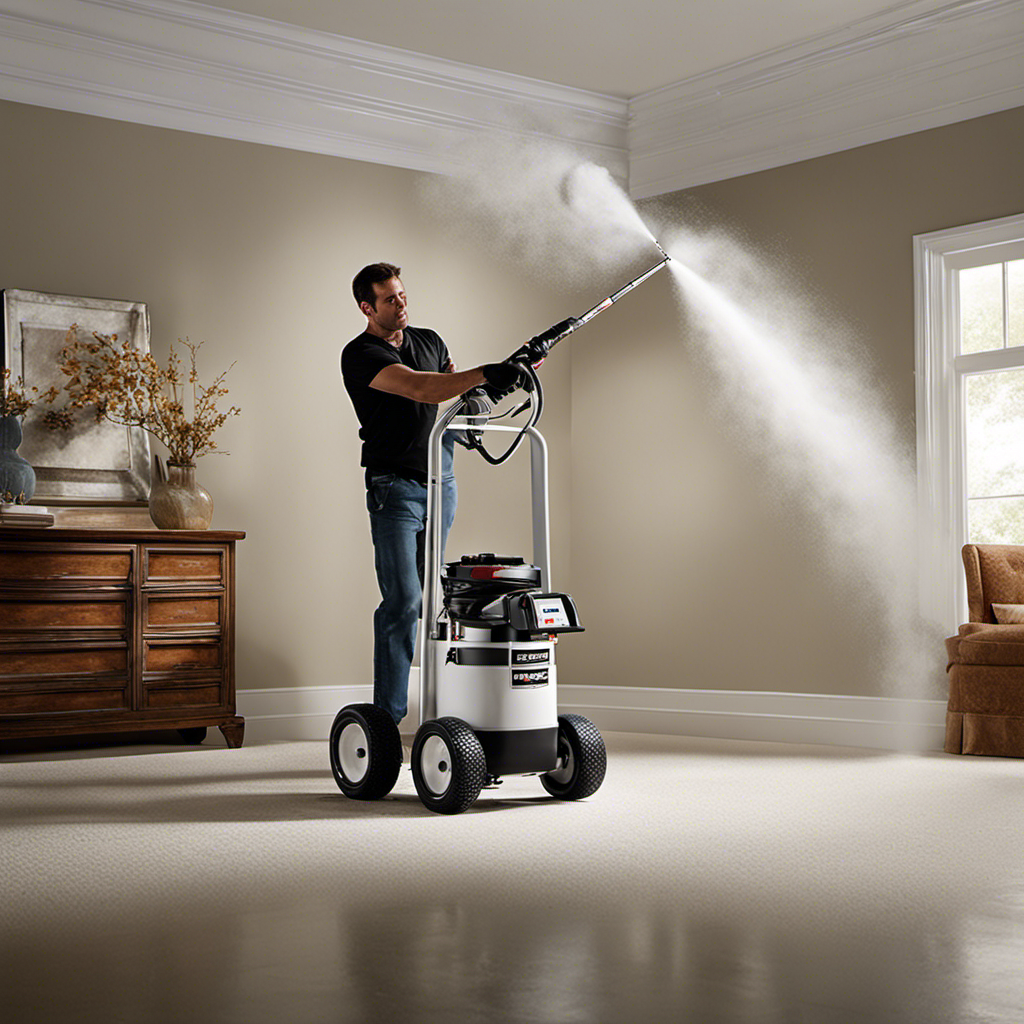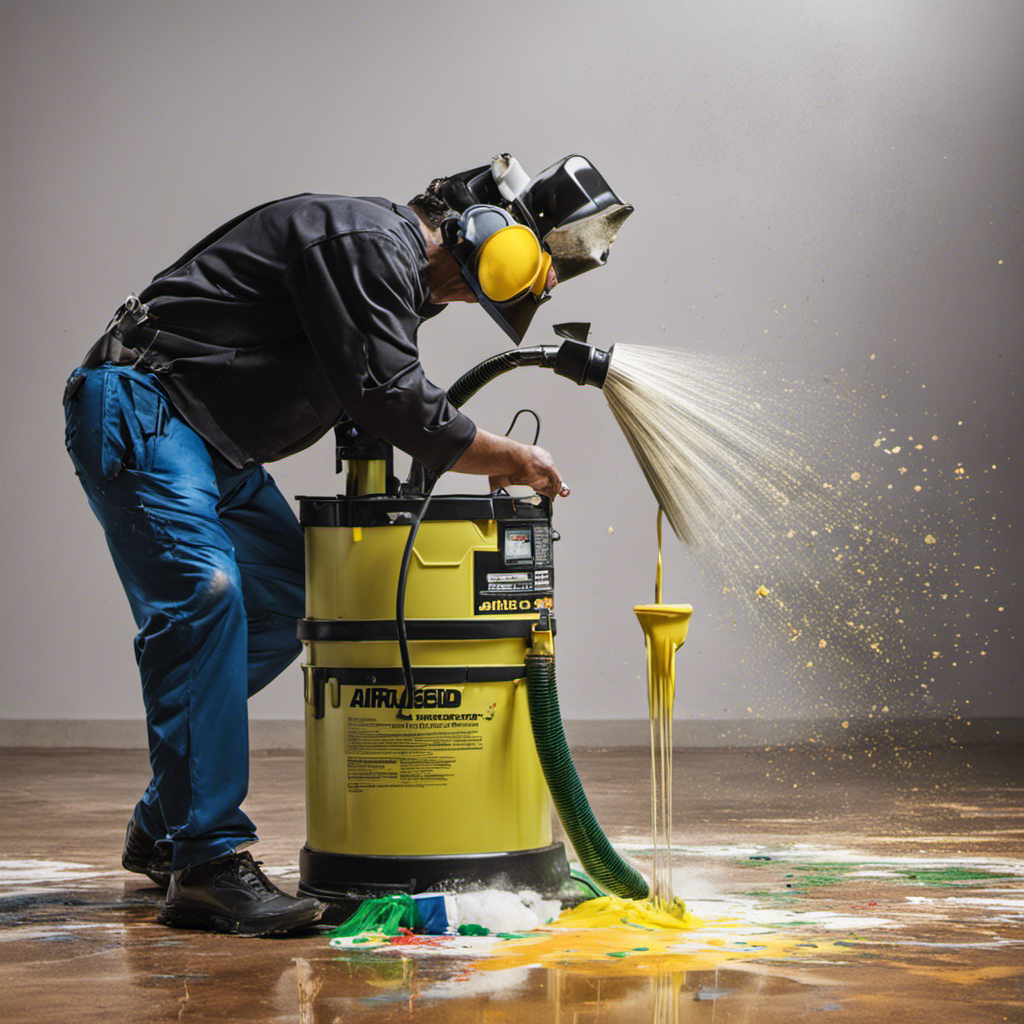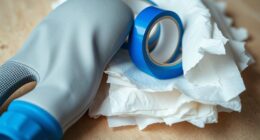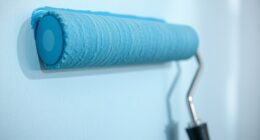When spraying in high humidity, choose low-viscosity paints and use equipment like HVLP spray guns to improve control and finish. Control the environment with dehumidifiers and good ventilation, and prepare surfaces properly before painting. Apply thin coats with consistent strokes, and keep tools dry. If moisture persists, post-painting care like fans and monitoring helps prevent issues. Stay with us to discover more expert tips for perfect results even in damp conditions.
Key Takeaways
- Use HVLP spray guns for better control and reduced overspray in humid conditions.
- Adjust spray pressure and technique to prevent runs and uneven coverage caused by moisture.
- Choose low-viscosity, humidity-resistant paints to improve adhesion and drying in high moisture environments.
- Control workspace humidity with dehumidifiers and proper ventilation before and during spraying.
- Apply thin, even coats and allow longer drying times to ensure proper curing in humid conditions.
Understanding How Humidity Affects Spray Painting
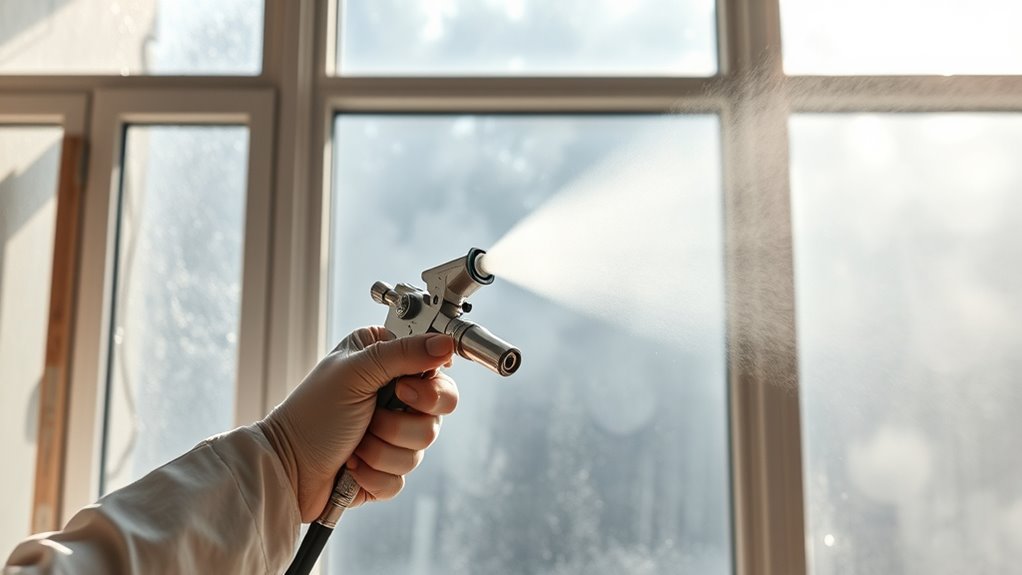
Humidity plays a significant role in the quality of your spray painting projects. High humidity impacts how your paint dries, often leading to longer drying times and a greater chance of uneven finishes. Moisture challenges arise because excess moisture in the air can cause paint to bubble, run, or develop a cloudy appearance. When humidity levels are too high, the moisture interferes with the paint’s adhesion and curing process, resulting in a subpar finish. You might notice that paint doesn’t settle smoothly or that it takes longer to dry completely. Understanding how humidity impacts your spray application helps you anticipate issues and adjust your technique or timing accordingly, ensuring a better, more professional-looking result despite moisture challenges. Additionally, employing proper drying techniques can further mitigate the effects of high humidity on your paint job. Being aware of air quality and humidity levels can help you choose the optimal time and conditions for spraying, leading to a smoother, more durable finish. Monitoring humidity levels and employing dehumidifiers or fans can further improve your spraying environment and outcomes, especially as automation and environmental controls become more prevalent in modern painting setups. Recognizing the importance of climate conditions allows you to plan your projects better and achieve consistent results even in challenging weather.
Choosing the Right Paint and Equipment for Humid Conditions
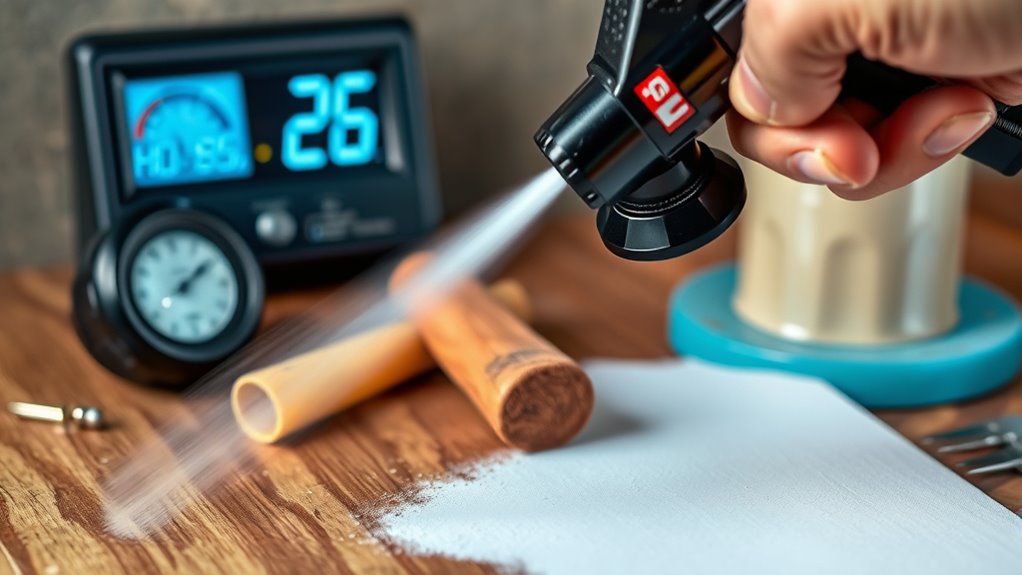
When painting in humid conditions, selecting the right paint and equipment is essential to achieve a smooth, durable finish. Humidity impacts paint viscosity, so choose formulations designed for high moisture environments. Using proper brush techniques can help you control paint application and reduce drips. Consider the following when choosing your tools: 1. Use low-viscosity paints to prevent runs and ensure smooth flow. 2. Opt for HVLP spray guns for better control in high humidity. 3. Invest in high-quality brushes with synthetic bristles for even coverage. 4. Adjust spray pressure and technique to accommodate paint’s flow and humidity levels. Additionally, leveraging AI-driven insights can assist in selecting optimal products and techniques suited for humid conditions. Understanding paint compatibility with humidity levels can also improve overall results and longevity of the finish. Incorporating AI security technologies into your project planning can help ensure that your equipment and data remain protected during your work process. Being aware of environmental factors like temperature and humidity can further refine your approach and lead to better outcomes. For example, using humidity-resistant paints can significantly improve the quality of your finish in damp environments.
Preparation Steps to Minimize Humidity-Related Issues
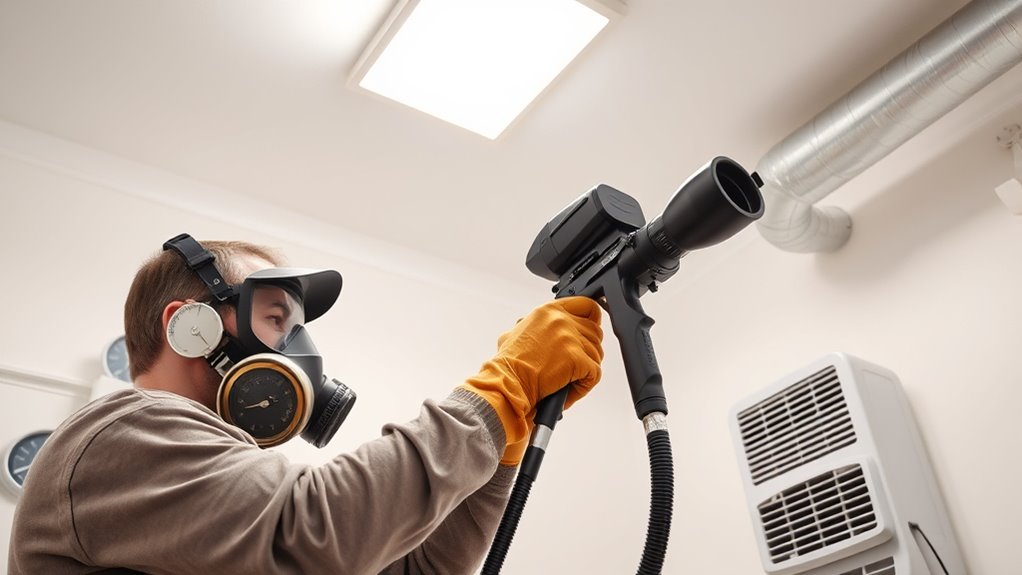
To prevent humidity from causing problems during painting, proper preparation is essential. Start by controlling humidity levels in your workspace, using dehumidifiers or fans if needed. This humidity control helps create an ideal environment for paint adhesion and drying. Next, focus on surface preparation; ensure surfaces are thoroughly cleaned, dry, and free of moisture, dust, or grease. Sand rough areas to promote better paint grip and remove any peeling or flaking paint. By sealing surfaces properly and allowing them to dry completely before applying paint, you minimize moisture-related issues. Additionally, understanding air purifier maintenance and their role in improving indoor air quality can help you create a healthier workspace and protect your tools from dust and contaminants. Proper ventilation techniques are also crucial for controlling moisture levels and ensuring even drying. These preparation steps reduce the risk of bubbling, blistering, or uneven finishes caused by high humidity. Taking the time to control humidity and prepare surfaces correctly sets the foundation for a successful paint job. Paying attention to air circulation strategies can further enhance drying conditions and prevent moisture buildup. Furthermore, managing room temperature effectively can also impact drying times and paint performance in humid conditions.
Techniques for Applying Paint Effectively in High Moisture
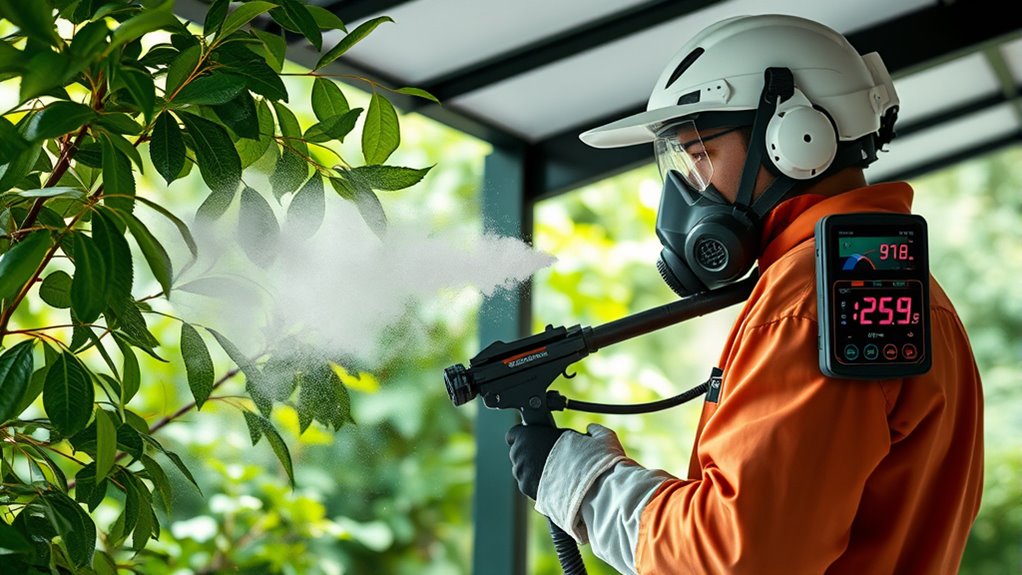
Applying paint effectively in high moisture conditions requires you to adapt your techniques to guarantee proper adhesion and a smooth finish. First, focus on proper brush techniques, using light, consistent strokes to prevent streaks and uneven coverage. Second, monitor and maintain ideal paint temperature; cooler paint can slow drying and trap moisture. Third, avoid applying thick coats—thin, even layers help paint adhere better in humid environments. Lastly, ensure your tools are clean and dry, preventing moisture from affecting the application. By adjusting your brush techniques, controlling paint temperature, and applying thin coats, you improve the chances of a flawless finish despite high humidity. These methods help your paint cure properly and resist peeling or bubbling caused by excess moisture.
Post-Painting Care and Troubleshooting in Humid Environments
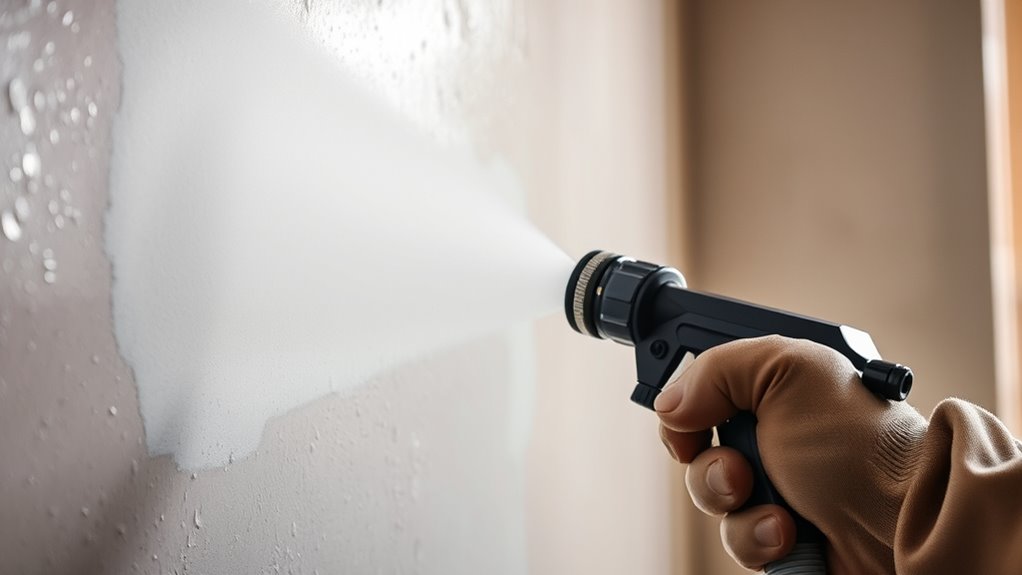
After you finish painting in humid conditions, monitoring the drying process carefully is vital. Humidity management helps prevent issues like poor paint adhesion or blistering. Check for uneven coating or tackiness, which can signal excess moisture. If problems arise, consider using dehumidifiers or fans to improve airflow. Proper post-painting care guarantees longevity and quality of your finish. Additionally, understanding AI Security measures can assist in implementing smart tools to monitor environmental conditions during painting. Recognizing the impact of humidity on paint drying can help you adjust your techniques more effectively. Being aware of paint shelf life can also prevent using compromised coatings that may not adhere properly. Using headphones to listen to ambient conditions or music can help you stay alert to subtle changes during the drying process. Applying personal finance management strategies, such as budgeting for equipment like dehumidifiers or fans, can also contribute to more effective post-painting care.
Frequently Asked Questions
How Does Humidity Impact Drying Times of Different Paint Types?
Humidity effects can considerably impact drying times of different paint types. When humidity is high, it slows down the evaporation process, causing a drying delay. Oil-based paints typically take longer to dry because they rely on solvent evaporation, which humidity hampers. Water-based paints also experience slower drying, but to a lesser extent. To guarantee proper curing, you might need to increase ventilation or wait longer before recoating.
Can Specific Paint Formulations Resist Humidity Better Than Others?
Think of paint formulations as armor against humidity. Some formulations, like acrylic latex or epoxy paints, resist moisture better, keeping their color and finish intact even in damp conditions. You’ve seen how waterproof jackets outperform regular ones in rain; similarly, these paints offer superior humidity resistance. Choosing the right paint formulation guarantees your project withstands moisture, reducing issues like blistering or peeling and achieving a durable finish despite high humidity.
Are There Any Environmental Controls to Reduce Humidity During Spraying?
To reduce humidity during spraying, you should consider using a dehumidifier in a controlled environment. This device helps lower moisture levels, creating ideal conditions for painting. Additionally, maintaining good ventilation and avoiding outdoor humidity fluctuations can make a big difference. By actively managing these environmental controls, you guarantee a smoother spray process, better adhesion, and a high-quality finish despite high moisture conditions.
How Does Temperature Interplay With Humidity During Spray Painting?
Think of temperature as the orchestra conductor guiding moisture’s dance in your spray project. When it’s warm, temperature effects can cause moisture interaction to increase, risking runs or uneven finishes. Cooler temps slow evaporation, helping paint adhere better but can trap humidity. You must balance temperature and humidity, adjusting your spray schedule accordingly, to guarantee smooth application and a flawless finish.
What Are the Long-Term Effects of High Moisture on Painted Surfaces?
High moisture can lead to long-term moisture damage, causing your painted surfaces to deteriorate over time. You might notice peeling, bubbling, or discoloration as moisture seeps in and weakens the paint layer. To prevent surface deterioration, guarantee proper sealing and ventilation, especially in humid environments. Regular maintenance and addressing any signs of moisture intrusion early will help preserve your paint job and extend its lifespan.
Conclusion
Now that you know how humidity can turn your spray painting project into a storm, you’re better equipped to tackle high moisture conditions. Think of your paint job as a delicate dance with the weather—by choosing the right techniques and preparation, you’ll keep moisture from sneaking in and ruining your work. With these tips, your finish will shine like a lighthouse through fog, proving that even in damp conditions, your craftsmanship can shine bright.
A seasoned painter with over 15 years in the industry, Mike transitioned from hands-on painting projects to the digital world of paint sprayers. His extensive experience gives him a unique perspective on what users truly need when it comes to painting tools. As the Editor in Chief of Paint Sprayer Zone, Mike ensures that every piece of content not only provides value but also reflects the realities of painting — the challenges, the joys, and the intricate details.
